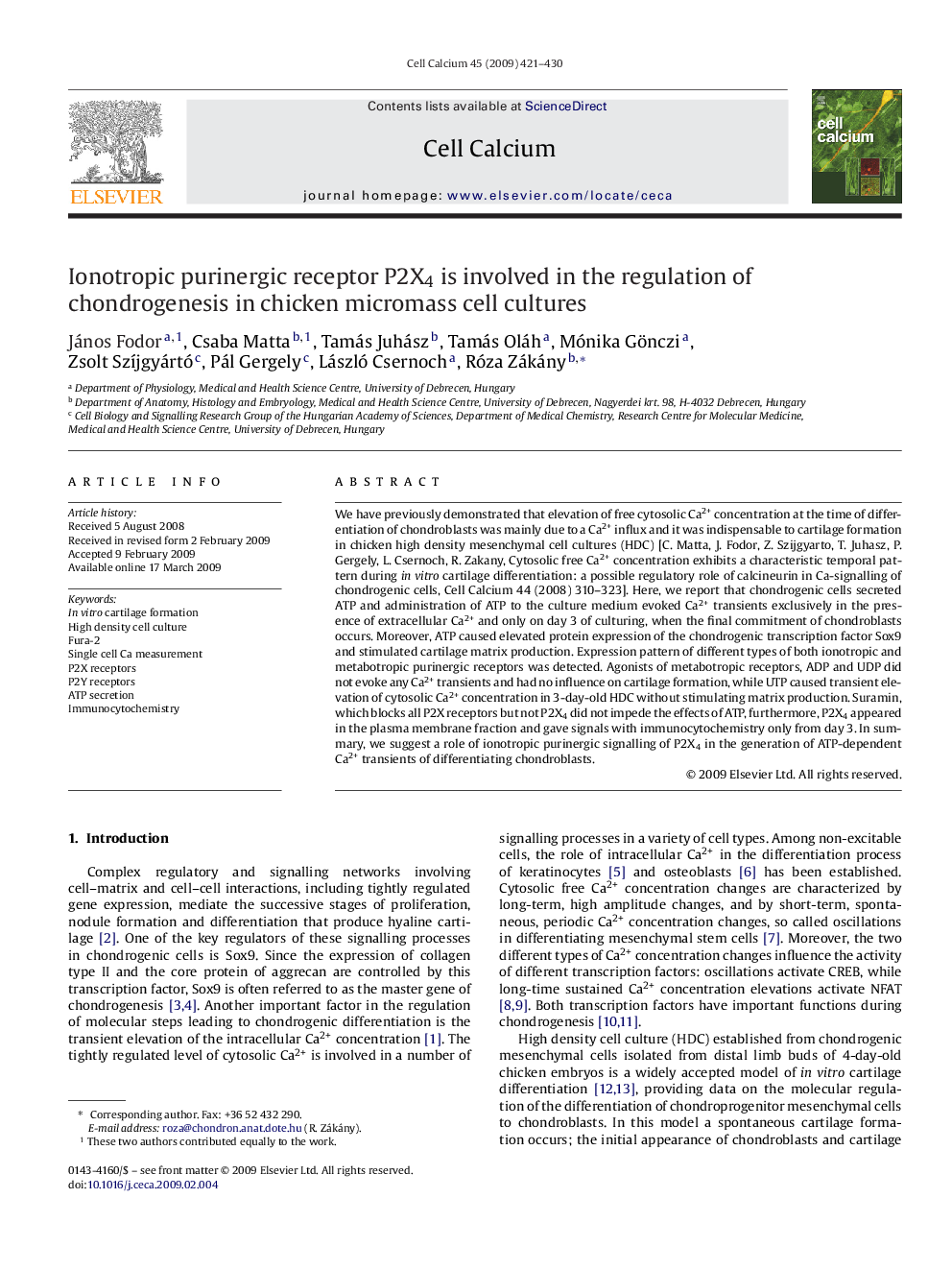| Article ID | Journal | Published Year | Pages | File Type |
|---|---|---|---|---|
| 2166242 | Cell Calcium | 2009 | 10 Pages |
Abstract
We have previously demonstrated that elevation of free cytosolic Ca2+ concentration at the time of differentiation of chondroblasts was mainly due to a Ca2+ influx and it was indispensable to cartilage formation in chicken high density mesenchymal cell cultures (HDC) [C. Matta, J. Fodor, Z. Szijgyarto, T. Juhasz, P. Gergely, L. Csernoch, R. Zakany, Cytosolic free Ca2+ concentration exhibits a characteristic temporal pattern during in vitro cartilage differentiation: a possible regulatory role of calcineurin in Ca-signalling of chondrogenic cells, Cell Calcium 44 (2008) 310-323]. Here, we report that chondrogenic cells secreted ATP and administration of ATP to the culture medium evoked Ca2+ transients exclusively in the presence of extracellular Ca2+ and only on day 3 of culturing, when the final commitment of chondroblasts occurs. Moreover, ATP caused elevated protein expression of the chondrogenic transcription factor Sox9 and stimulated cartilage matrix production. Expression pattern of different types of both ionotropic and metabotropic purinergic receptors was detected. Agonists of metabotropic receptors, ADP and UDP did not evoke any Ca2+ transients and had no influence on cartilage formation, while UTP caused transient elevation of cytosolic Ca2+ concentration in 3-day-old HDC without stimulating matrix production. Suramin, which blocks all P2X receptors but not P2X4 did not impede the effects of ATP, furthermore, P2X4 appeared in the plasma membrane fraction and gave signals with immunocytochemistry only from day 3. In summary, we suggest a role of ionotropic purinergic signalling of P2X4 in the generation of ATP-dependent Ca2+ transients of differentiating chondroblasts.
Related Topics
Life Sciences
Biochemistry, Genetics and Molecular Biology
Cell Biology
Authors
János Fodor, Csaba Matta, Tamás Juhász, Tamás Oláh, Mónika Gönczi, Zsolt SzÃjgyártó, Pál Gergely, László Csernoch, Róza Zákány,
